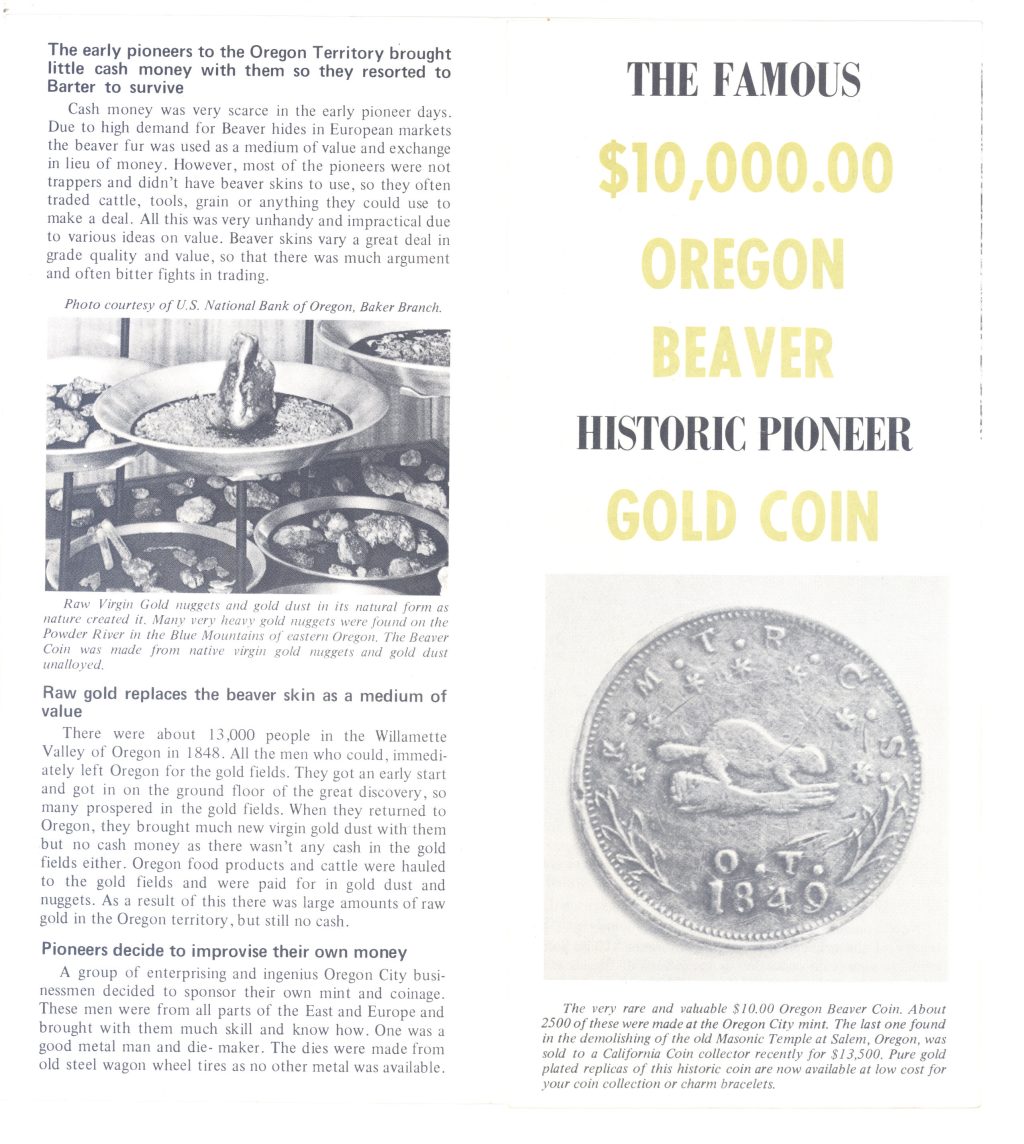In the ever-evolving landscape of financial innovation, new trends emerge constantly. One such trend that has recently captured attention is “Beaver Coins.” While the term might sound like a modern cryptocurrency, it actually refers to a historical artifact from the 19th century. This article explores what Beaver Coins are, their significance in American history, and why they have become a topic of interest once again.
The Origins of Beaver Coins
Beaver Coins were not a digital currency but rather physical gold coins minted in the Oregon Territory in 1849. At the time, the region faced a severe lack of standardized currency. Settlers used a variety of items for trade, including beaver skins, wheat, and gold dust. These forms of currency were unreliable due to their fluctuating value and difficulty in transportation.
The need for a stable medium of exchange led to the creation of Beaver Coins. These coins were produced by the Oregon Exchange Company, a group of eight businessmen who sought to fill the void left by the absence of federal coinage. The company’s efforts were driven by the urgency of the situation, as the discovery of gold in California had brought an influx of gold dust into the Oregon Territory, creating chaos in commerce.
Design and Production of Beaver Coins
The design of Beaver Coins was unique and symbolic. The obverse of each coin featured a beaver, which became the official emblem of Oregon. The reverse displayed the company name and the initials of its members. These coins were made from solid gold and contained 8% more gold than contemporary U.S. coins, making them highly valuable.
The production process was challenging. The Oregon Exchange Company had to improvise, using scrap iron and discarded wagon tires to create a rolling mill. Hamilton Campbell, a former Methodist mission worker, engraved the dies for the coins. Despite these challenges, the company managed to mint approximately 6,000 five-dollar coins and 2,850 ten-dollar coins before ceasing operations in September 1849.
The Short Life of Beaver Coins
The life of the Oregon Exchange Company was short-lived. In 1854, the U.S. Mint opened in San Francisco, providing a steady supply of federal currency. As a result, the government mandated that all private coinage be turned in and melted down. However, some Beaver Coins escaped this fate, and today, only about fifty are believed to exist.
The dies for the Beaver Coins, along with one of the ten-dollar pieces, are now housed at the Oregon Historical Society. These artifacts serve as a testament to the ingenuity and determination of the Oregon Exchange Company.
The Modern Resurgence of Beaver Coins
While Beaver Coins are no longer in circulation, they have recently gained renewed interest, particularly in the context of cryptocurrency. Some analysts suggest that the term “Beaver Coins” could be a nod to the historical significance of these coins, highlighting the importance of reliable and standardized currency.
In the digital age, cryptocurrencies like Bitcoin and Ethereum have emerged as alternatives to traditional fiat currencies. These digital assets offer features such as decentralization, security, and transparency, much like the Beaver Coins did in their time. However, unlike the Beaver Coins, which were backed by physical gold, cryptocurrencies rely on complex algorithms and blockchain technology.
The Value of Beaver Coins Today
Despite their historical significance, Beaver Coins remain rare and valuable. A five-dollar Beaver Coin sold for $125,000 in 2006, and another was auctioned for over $257,000 in 2015. These high prices reflect the rarity and historical importance of these coins, as well as their appeal to collectors and investors.
The limited supply of Beaver Coins makes them a desirable asset in the numismatic market. Collectors often seek out these coins for their historical value and potential for appreciation. As a result, Beaver Coins continue to hold a special place in the world of rare coins.
Conclusion
Beaver Coins represent a fascinating chapter in American history. Their creation was a response to the urgent need for a stable currency during a time of economic uncertainty. Although they are no longer in circulation, their legacy endures, and their value continues to grow.
As the world moves toward digital currencies, the story of Beaver Coins serves as a reminder of the importance of reliable and standardized money. Whether in the form of physical gold or digital assets, the need for trustworthy currency remains as relevant today as it was in 1849.
Author Section
Author: John Doe
Title/Role: Financial Analyst and Historian
Credentials: With over a decade of experience in financial markets and historical research, John Doe has written extensively on the intersection of finance and history. His work focuses on understanding how past economic innovations shape modern financial systems.
Profile Link: www.johndoefinancial.com
Sources
Related Articles
Call to Action
Stay updated with the latest news and insights on financial trends and historical innovations. Explore our archives to learn more about the stories that shaped our economy and society.
URL Slug
us-trending-news-beaver-coins-guide













More Stories
US Trending News: Key Ukrainian Seaports and Their Role in Global Trade
US Trending News: Understanding Shade Lighter Than Cappuccino: A Guide to Coffee Bean Roasts
Understanding the Evolution of Online Casinos in Canada: A 2019 Perspective